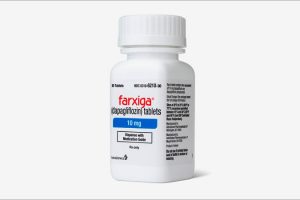FDA Expands Use of Dapagliflozin to Broader Range of HF

The US Food and Drug Administration (FDA) has expanded the indication of dapagliflozin (Farxiga, AstraZeneca) to include treatment of heart failure (HF) across the full spectrum of left-ventricular ejection fraction (LVEF) ― including HF with mildly reduced ejection fraction (HFmrEF) and with preserved ejection fraction (HFpEF).
The sodium-glucose cotransporter 2 (SGLT2) inhibitor was previously approved in the US for adults with heart failure with reduced ejection fraction (HFrEF).
The expanded indication is based on data from the phase 3 DELIVER trial, which showed clear clinical benefits of the SGLT2 inhibitor for patients with HF regardless of left-ventricular function, as reported previously by theheart.org | Medscape Cardiology.
In the trial, which included more than 6200 patients, dapagliflozin led to a statistically significant and clinically meaningful early reduction in the primary composite endpoint of cardiovascular (CV) death or worsening HF for patients with HFmrEF or HFpEFF.
In addition, results of a pooled analysis of the DAPA-HF and DELIVER phase 3 trials showed a consistent benefit from dapagliflozin treatment in significantly reducing the combined endpoint of CV death or HF hospitalization across the range of LVEF.
The European Commission expanded the indication for dapagliflozin (Forxiga) to include HF across the full spectrum of LVEF back in February, as reported by theheart.org | Medscape Cardiology.
The SGLT2 inhibitor is also approved for use by patients with chronic kidney disease. It was first approved in 2014 to improve glycemic control for patients with diabetes mellitus.
For more news, follow Medscape on Facebook, Twitter, Instagram, and YouTube.
Source: Read Full Article




